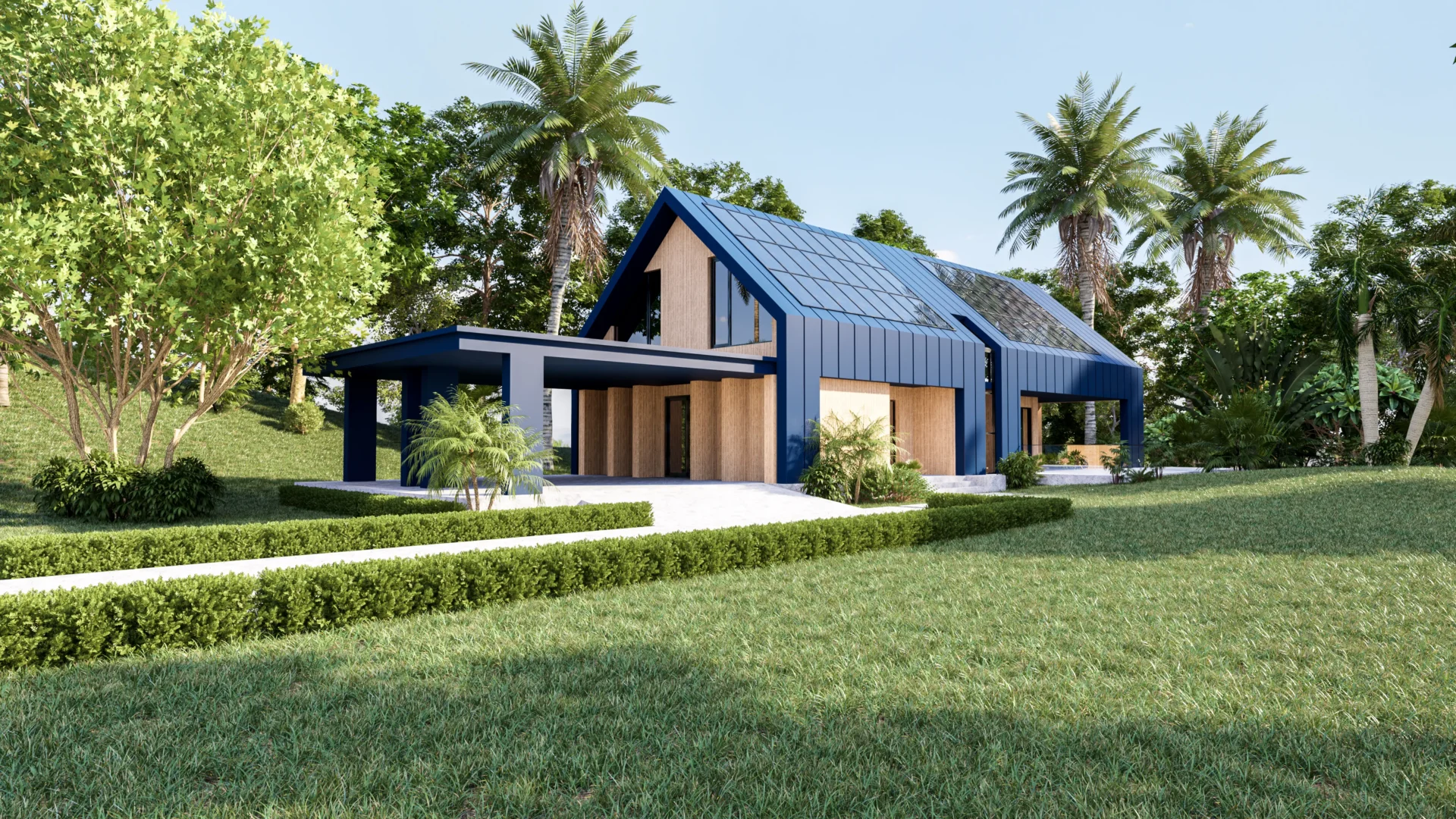
Tropical house design has been gaining increasing attention, especially in warm and humid climates like Bali. These designs are more than just visually appealing, they offer an incredible blend of aesthetics, practicality, and sustainability, ensuring comfort throughout the year.
When done right, tropical houses embrace natural beauty, minimize energy consumption, and provide spaces that flow harmoniously with the environment.
Today’s article explores five key features that make tropical house designs not just stunning, but incredibly effective in enhancing the quality of your life.
Let’s open the door to tropical living together.
1. Open-Air Living Concepts
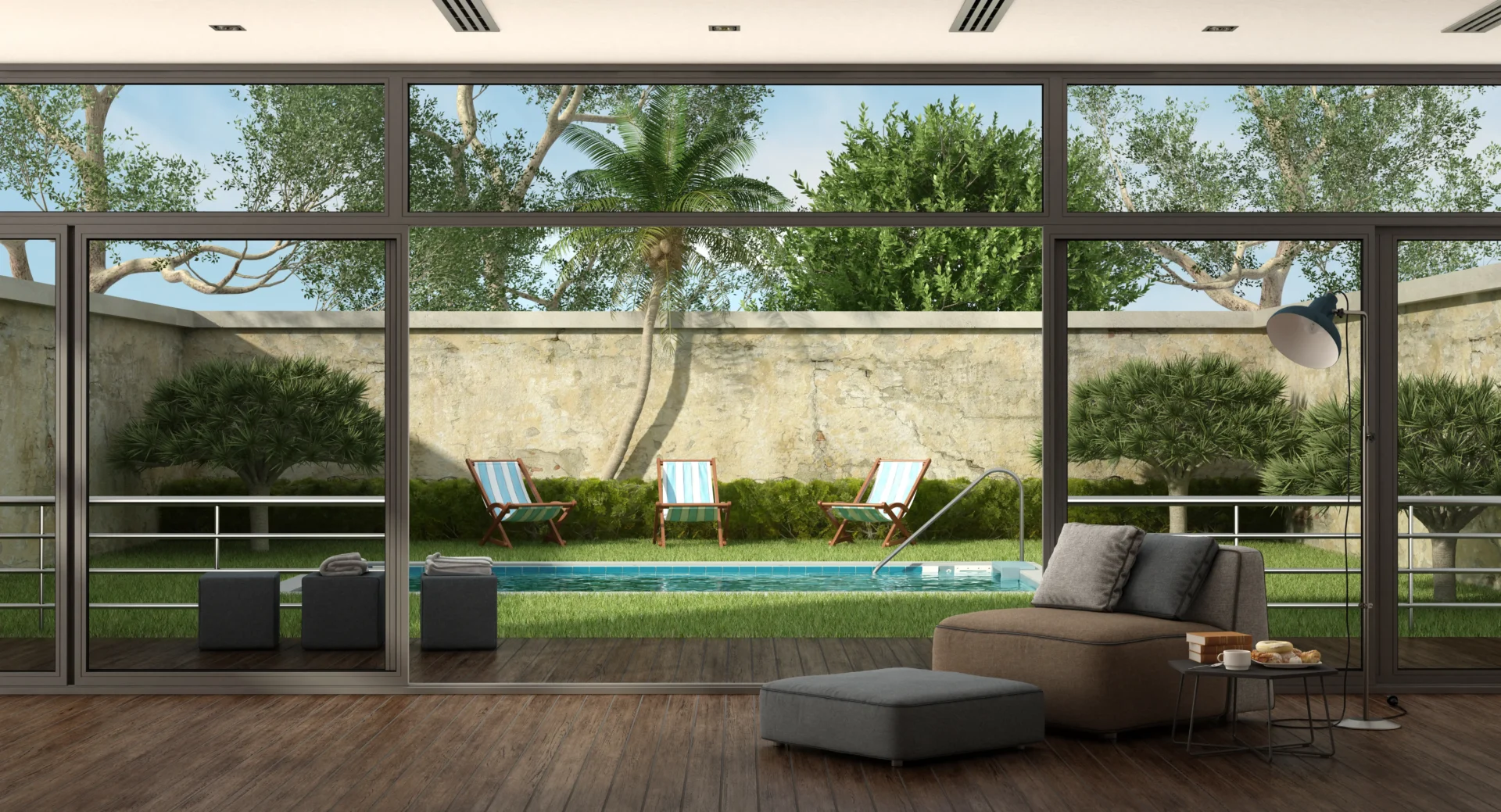
At the heart of tropical house design is an emphasis on open spaces. The tropical climate encourages a relaxed, free-flowing living experience, and open-air concepts are a perfect fit.
By removing unnecessary walls and embracing minimalist layouts, tropical homes offer an expansive feel, where the indoors blend seamlessly with the outdoors.
The integration of large glass doors, open windows, and spacious patios creates continuous airflow, bringing in the fresh breeze and allowing homeowners to connect with nature. This openness not only improves ventilation but also nurtures a sense of freedom and flexibility within the home.
Why It Matters:
- Enhances natural ventilation, which reduces reliance on air conditioning.
- Promotes social interaction and family bonding by providing large communal spaces.
- Makes rooms feel more expansive and airy, creating a light-filled environment.
2. Passive Cooling Techniques
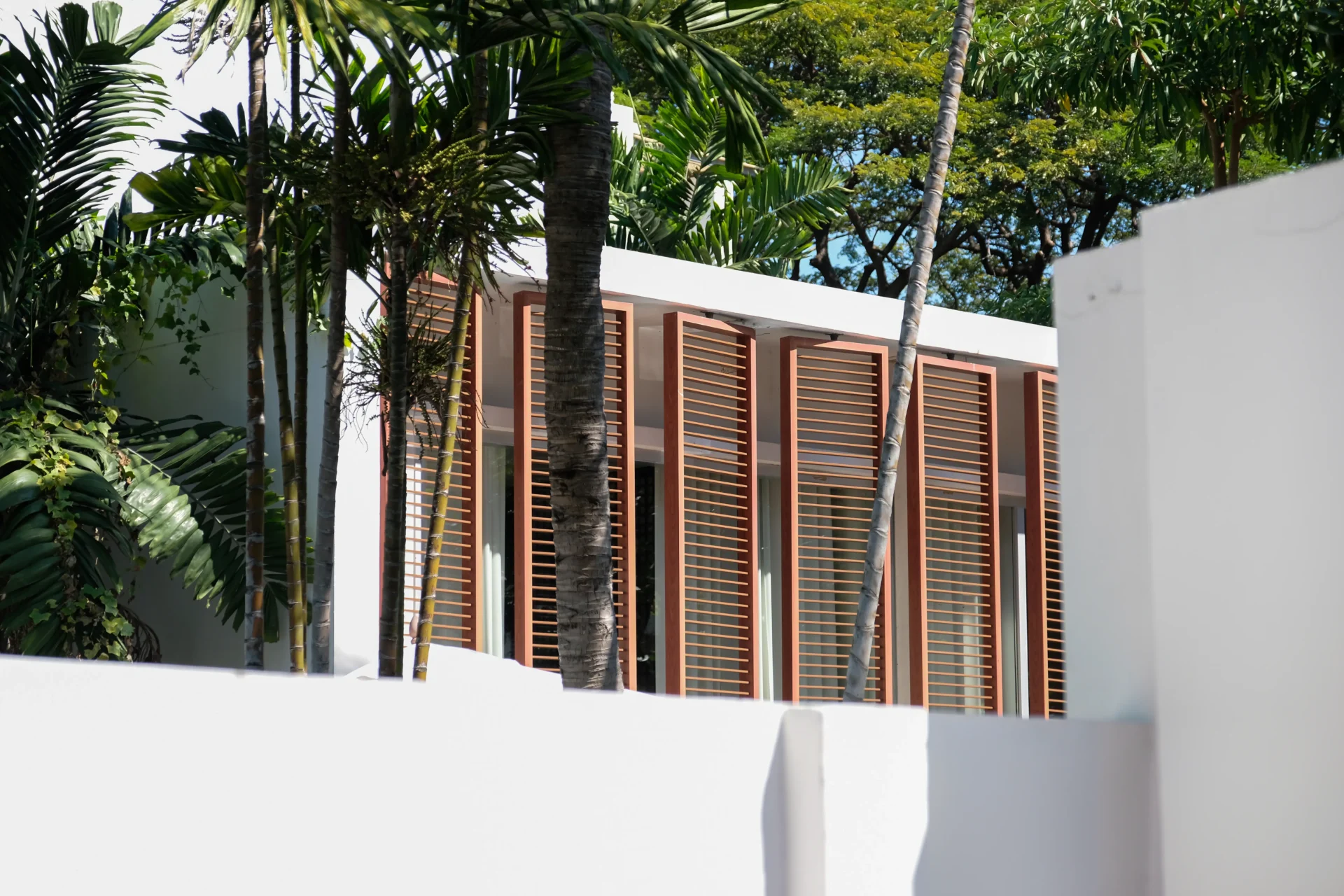
One of the standout features of tropical house design is its focus on passive cooling techniques. In tropical climates like Bali, managing heat is essential, and these homes excel at keeping temperatures comfortable without relying heavily on artificial cooling.
High ceilings and large windows allow for cross ventilation, where cool air flows freely through the house, while warm air escapes through the higher openings.
Roof overhangs, pergolas, and deep balconies offer much-needed shade to protect interiors from direct sunlight. These techniques work in harmony with the environment, ensuring a naturally cooler and more comfortable living space.
Smart Cooling Features:
- Clerestory windows allow hot air to rise and escape.
- Vent blocks and louvered panels allow for efficient airflow.
- Ceiling fans help circulate air, offering an alternative to AC units.
3. Natural and Local Materials
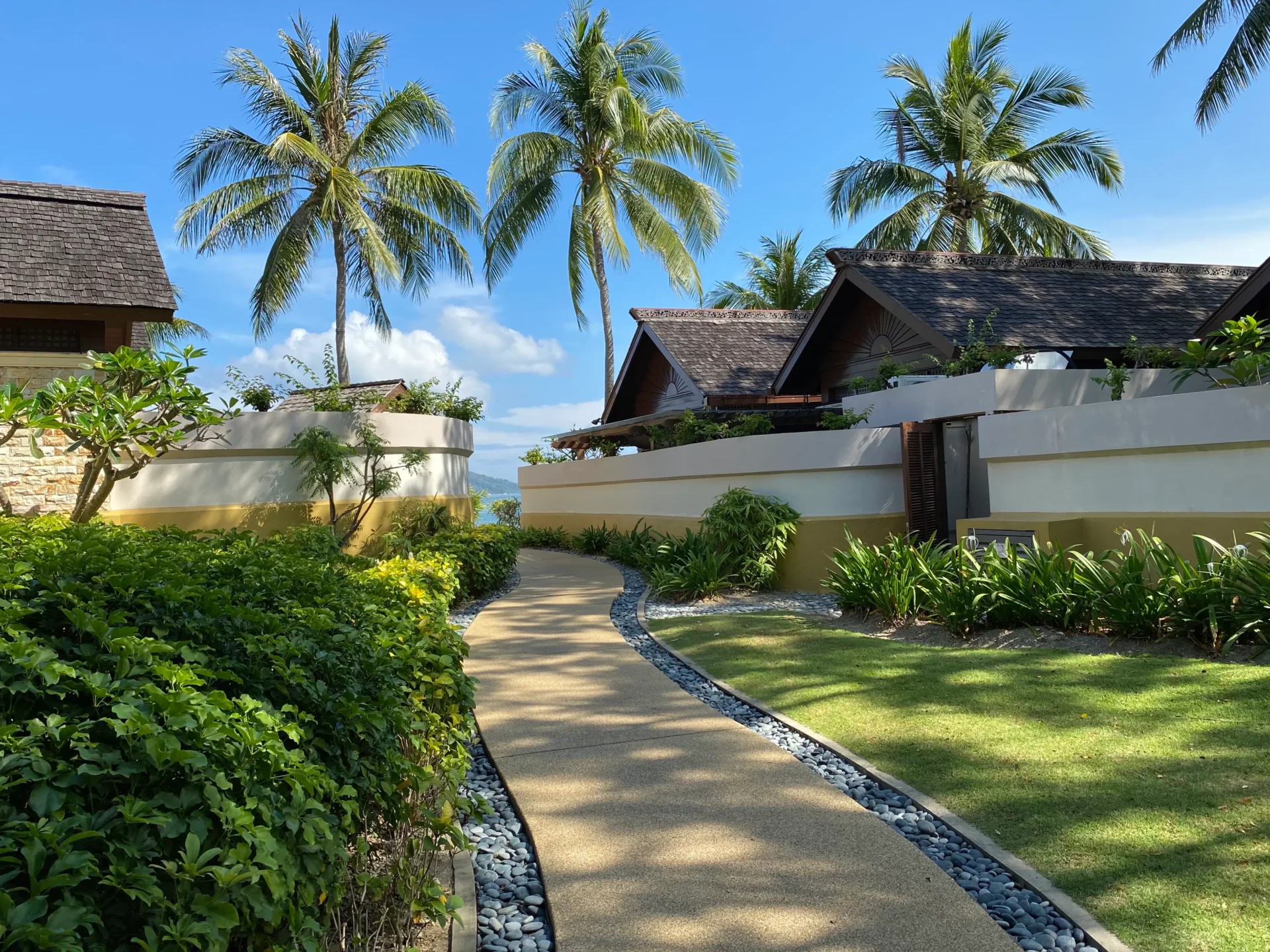
Tropical house design celebrates the beauty of natural and locally sourced materials, which are perfectly suited to the region's climate. Materials such as bamboo, teak wood, natural stone, and rattan are commonly used, each chosen for their ability to stand up to the humid environment while maintaining aesthetic appeal.
These materials are durable and offer warmth and texture that can make a space feel inviting and grounded. Furthermore, using local materials reduces the carbon footprint associated with transporting materials from distant locations, making the design more sustainable.
It also creates a home that blends seamlessly with the surrounding landscape.
Benefits of Local Materials:
- Climate-appropriate materials help regulate temperature and humidity inside.
- Reduces environmental impact through sustainable sourcing and reduced transportation.
- Enhances the beauty and natural integration of the house with its surroundings.
4. Elevated or Floating Structures
Raising the structure of a tropical home above the ground is another crucial design element. This approach is particularly useful in areas prone to flooding or high humidity. Elevating the structure keeps it safe from water damage while providing better airflow underneath, which naturally cools the space.
By elevating the building, the home benefits from a lighter, airier feel, preventing moisture build-up in the lower areas and improving the overall comfort of the space.
In addition, the raised architecture adds a unique aesthetic quality to the design, making it visually striking and in harmony with the natural environment.
Why It Works:
- Protects the home from moisture damage and flooding.
- Encourages natural cooling by allowing air to flow beneath the house.
- Adds height and visual interest to the design that offers expansive views.
5. Lush Landscaping Integration
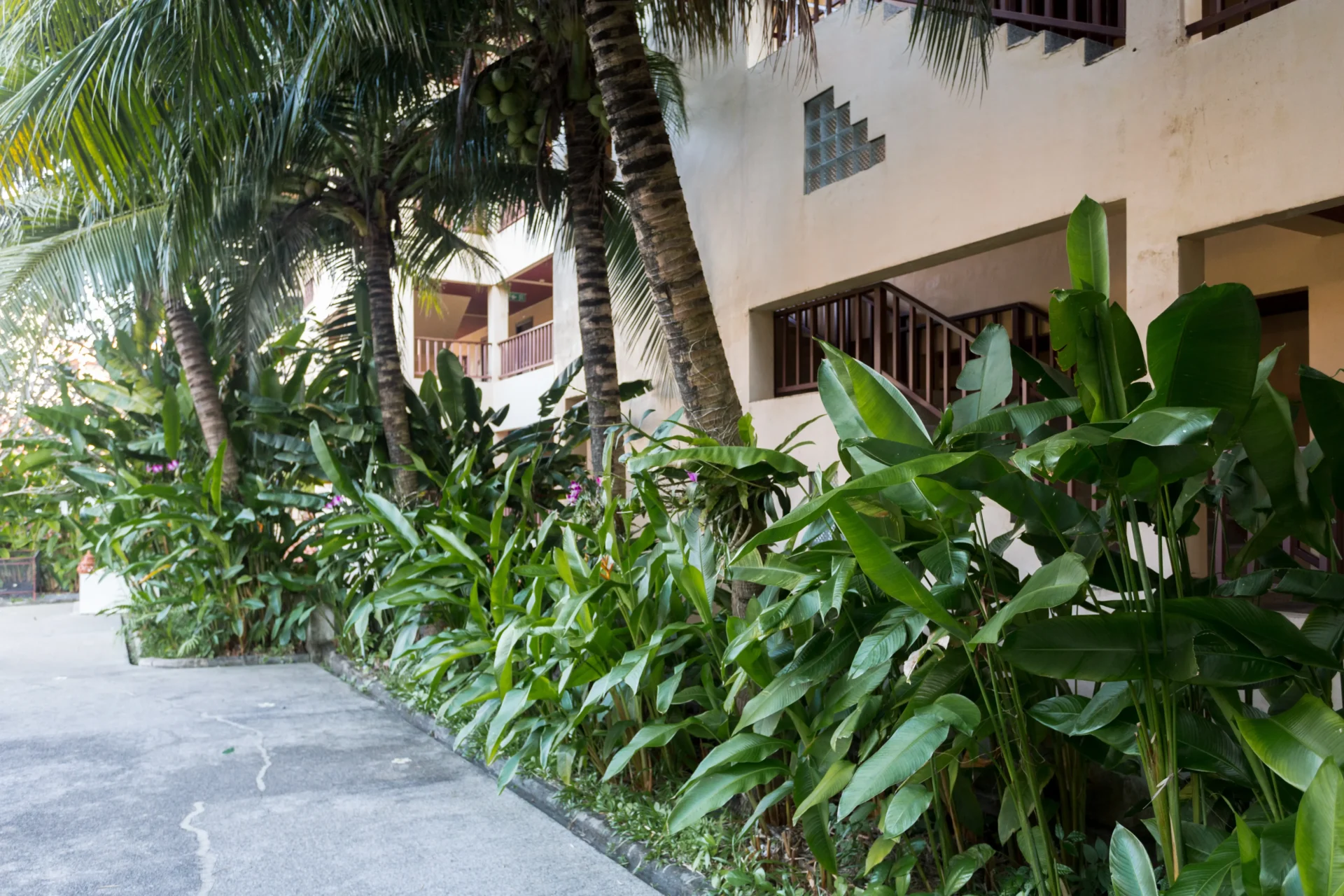
A hallmark of tropical house design is the seamless integration of landscaping with the built environment. Tropical homes often blur the line between the indoor and outdoor spaces, incorporating lush gardens, green walls, and tropical vegetation that contribute to privacy and microclimate control.
Outdoor living areas like patios, garden paths, and water features further enhance the tropical atmosphere, while also providing practical solutions for creating cooler, more comfortable environments.
Also, native plants require less maintenance, making them an ideal choice for your tropical homes. Water features like ponds or plunge pools not only add to the beauty of the space but also create a calming ambiance, making the home feel like a sanctuary.
Design Tips from the Expert:
- Incorporate native plants that thrive in the local climate for low-maintenance landscaping.
- Use water features, such as ponds or plunge pools, to enhance tranquility and beauty to your beautiful home.
- Design pathways that connect different areas of the home through lush greenery.
Also Read: Taupe Botanica Villa: Mediterranean Warmth in Bali’s Nature
Tropical house design is more than just an architectural trend, it is a lifestyle choice that brings together nature, sustainability, and functionality in a way that enhances your family well-being.
The five key features Manon has discussed which are open-air living, passive cooling, local materials, elevated structures, and lush landscaping are the foundation of a home that embraces the tropical environment while providing comfort, beauty, and efficiency.
By incorporating these elements into your home, you can create a space that reflects your values, maximizes natural resources, and offers a place where you can truly feel at peace.
Ready to Bring Your Tropical House Design to Life?
At Manon Design Studio, we specialize in creating tropical homes that are not only aesthetically stunning but also aligned with your unique lifestyle and environmental values.
Established in 2014 by architect Brahasata Indra, our studio focuses on creating spaces where nature and people coexist harmoniously, based on our mantra: “Nature Inspired, Brand Defined.”
Whether you are looking for a home that maximizes airflow, incorporates local materials, or integrates lush landscaping, we are here to help bring your tropical design vision to life.
Contact us today to start your journey toward creating a beautiful, sustainable, and functional tropical home.